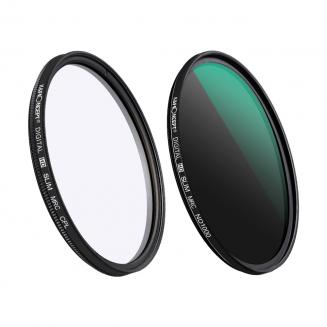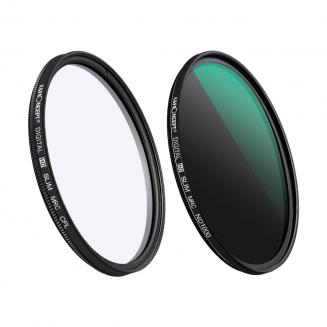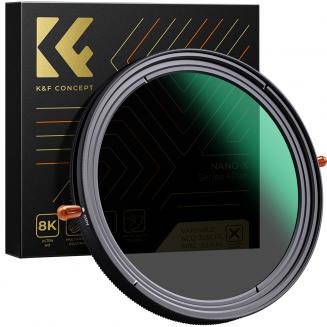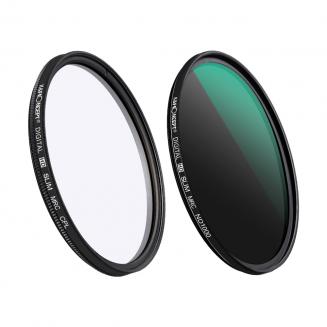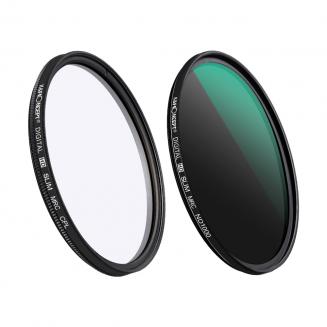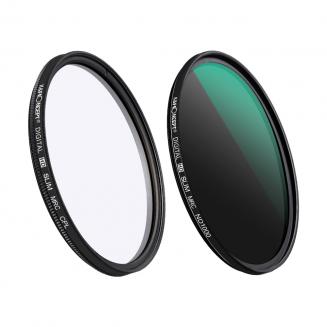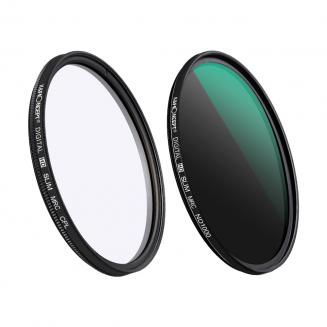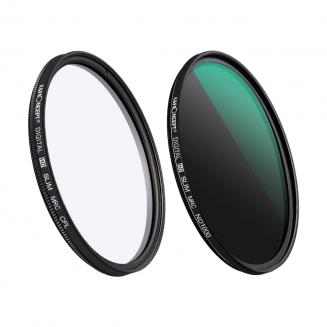Related Blog
Zenith Ttl Lens Mount
Array
![K&F Concept885 Wireless TTL Flash 1/8000 High-Speed Sync Speedlite Shoe Mount for Canon Nikon K&F Concept885 Wireless TTL Flash 1/8000 High-Speed Sync Speedlite Shoe Mount for Canon Nikon]()
![Contax Yashica CY Mount Lens to Nikon Z6 Z7 Camera K&F Concept Lens Mount Adapter Contax Yashica CY Mount Lens to Nikon Z6 Z7 Camera K&F Concept Lens Mount Adapter]()
![G AF-S Mount Lens to Nikon Z6 Z7 Camera K&F Concept Lens Mount Adapter G AF-S Mount Lens to Nikon Z6 Z7 Camera K&F Concept Lens Mount Adapter]()
![Olympus OM Mount Lens to Nikon Z6 Z7 Camera K&F Concept Lens Mount Adapter Olympus OM Mount Lens to Nikon Z6 Z7 Camera K&F Concept Lens Mount Adapter]()
![Minolta MA AF Mount Lens to Nikon Z6 Z7 Camera K&F Concept Lens Mount Adapter Minolta MA AF Mount Lens to Nikon Z6 Z7 Camera K&F Concept Lens Mount Adapter]()
![Minolta MD MC Mount Lens to Nikon Z6 Z7 Camera K&F Concept Lens Mount Adapter Minolta MD MC Mount Lens to Nikon Z6 Z7 Camera K&F Concept Lens Mount Adapter]()
![Nikon AI F Mount Lens to Micro Four Thirds (MFT, M4/3) Camera with Matting Varnish Compatible for Olympus Pen E-P1 P2 P3 P5 E-PL1 Nikon AI F Mount Lens to Micro Four Thirds (MFT, M4/3) Camera with Matting Varnish Compatible for Olympus Pen E-P1 P2 P3 P5 E-PL1]()
![Minolta MD MC Mount Lens to NEX E Mount Mirrorless Cameras with Matting Varnish Design for Sony A6000 A6400 A7II A5100 A7 A7RIII Minolta MD MC Mount Lens to NEX E Mount Mirrorless Cameras with Matting Varnish Design for Sony A6000 A6400 A7II A5100 A7 A7RIII]()
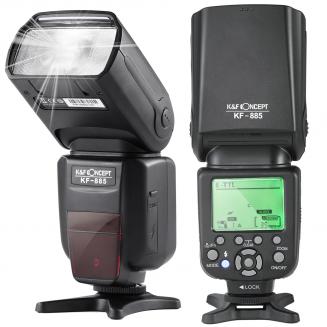
K&F Concept885 Wireless TTL Flash 1/8000 High-Speed Sync Speedlite Shoe Mount for Canon Nikon
$65.99
Save Instantly
Add to Cart

Contax Yashica CY Mount Lens to Nikon Z6 Z7 Camera K&F Concept Lens Mount Adapter
$45.99
Save Instantly
Add to Cart
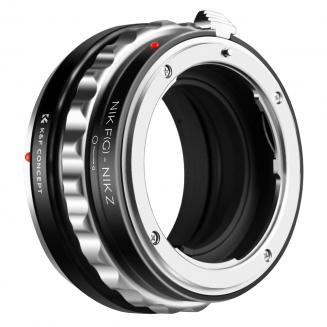
G AF-S Mount Lens to Nikon Z6 Z7 Camera K&F Concept Lens Mount Adapter
$52.99
Save Instantly
Add to Cart
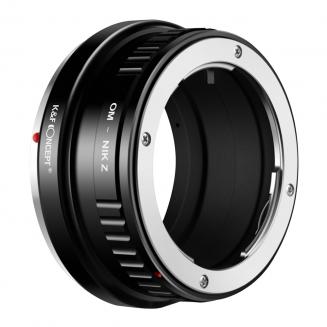
Olympus OM Mount Lens to Nikon Z6 Z7 Camera K&F Concept Lens Mount Adapter
$45.99
Save Instantly
Add to Cart
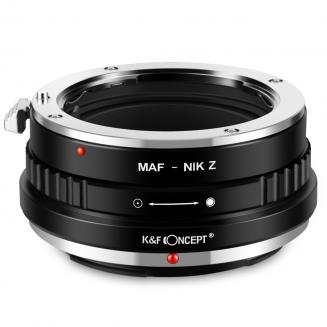
Minolta MA AF Mount Lens to Nikon Z6 Z7 Camera K&F Concept Lens Mount Adapter
$48.99
Save Instantly
Add to Cart
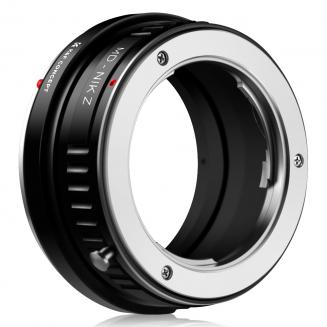
Minolta MD MC Mount Lens to Nikon Z6 Z7 Camera K&F Concept Lens Mount Adapter
$45.99
Save Instantly
Add to Cart
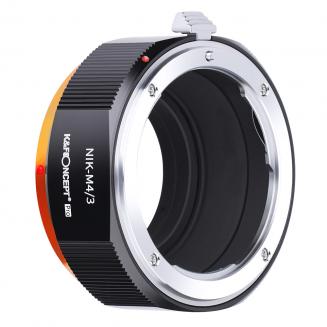
Nikon AI F Mount Lens to Micro Four Thirds (MFT, M4/3) Camera with Matting Varnish Compatible for Olympus Pen E-P1 P2 P3 P5 E-PL1
$33.99
Save Instantly
Add to Cart
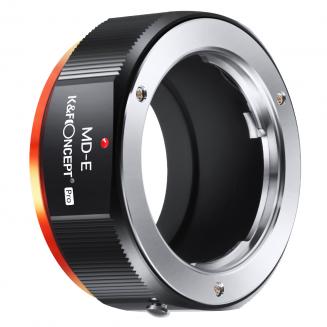
Minolta MD MC Mount Lens to NEX E Mount Mirrorless Cameras with Matting Varnish Design for Sony A6000 A6400 A7II A5100 A7 A7RIII
$28.99
Save Instantly
Add to Cart
Related Reviews
bargain 5 stars
hi this flash is very well made, I have used it for a few days and am very impressed,an absolute bargain for £25 shipped , I am using mine on a Nikon d3100 ,and as others have stated , you need to go into your cameras menu and switch ,the flash settings to manual , otherwise your pop up flash will try to fire, annoying...the head tilts and revolves , considering Nikon flashes with ttl are £200this is the bargain of the century personally I do not like ttl I am using gp recyco 1300 mah rechargeablesseem to be lasting ages you need 4 aa ..... I love the manual adjustment of the flashgunbasic tech is best tech ........... ps, could not believe my eyes when it arrived " build quality " AWSOMEgood luck and keep shooting ............bye xxxxx
26/12/2022
Great product
Are use this Lens mount on my new canon M 50, unfortunately the camera was defective but the lense mount did its job.
21/11/2022
Does not work TTL
was hoping this would work TTL for my Olympus cameras.
19/11/2022
Good lens
Mount seems a little tight. The 18-55 fits much better. Not sure if the lens is re-furb, used, or new. Unsure what "white box" means. Came with no Canon literature or packaging. Lens works well and takes a clear bright pic.I guess the low price is why it came the way it did. All that's left is to go on a picture taking trip and test it against my Olympus E-PL1.
04/08/2022
Powerful Speedlight!
Awesome speedlight! has power when you need it! i knew this was manual and not TTL but thats ok, its very easy to adjust the power settings at the back. overall excellent build quality!
12/03/2022
Excellent choice for use as a travel scope for wid
I was in the market for a good small scope that I could use at a moment’s notice with a minimum of fuss and bother and that I could also use as a travel scope without having to baby it. I already own two telescopes (in addition to several binoculars) – a JMI RB-66 on a large alt-az mount (consisting of two 6” reflecting telescopes yoked together and used like a giant binocular) and a Takahashi Sky90 refractor on an equatorial go-to mount. I love both scopes, but the JMI is heavy, cumbersome and a beast to move around. The Sky90 is a lot smaller and lighter, but, when combined with the equatorial mount, it’s still a little too big and heavy to run outside and use on a whim. It was also expensive enough that I’m not comfortable using it as a travel scope where it’s likely to undergo some rough handling. As a result, what I usually found myself doing was grabbing a set of binoculars and using those. There’s nothing wrong with that, except that the image is too shaky to be of much use or to get much enjoyment out of. Enter this scope – at least on paper, the specs were ideal for my needs: It has an aperture of 80mm, which is a good compromise size that should permit decent planetary viewing, lunar viewing, wide-field star viewing (essential for sights such as the Pleiades and certain star clusters) and at least the more prominent individual stars. It’s got a short focal length of 400mm, which makes it more portable and lighter than scopes with a longer focal length. It appeared from the specs to have a stable mount, which is essential for steady viewing. It contains all the accessories necessary to get you started – 3 lenses, a diagonal and a finding scope. And finally, it is being offered at a low enough price that I wouldn’t hesitate to use it as a travel scope. But be aware that this is a compromise size for a telescope. A focal length this short pretty much limits you to lower magnifications. Push the magnification too high and you’ll end up with various optical aberrations, unless you spend a lot of money to get a premium scope that is built to overcome those limitations. This is just a matter of the physics of the situation and it’s going to be a limitation for this sized scope, no matter who makes it. On the other hand, a scope of this size gives you a wider field of view than a scope with a longer focal length and there’s a lot to be said for wide-field telescope viewing. In addition, more aperture is almost always better than less aperture, since the larger the aperture, the more light that will be gathered. However, each small increase in aperture results in much higher prices and much larger sizes. As I said previously, for my purposes, 80mm was a good compromise. There are two other “compromises” in the specs for this particular scope of which the buyer should be aware: First, the diagonal provides an upright image, much like a spotting scope would; and second, the scope uses an alt-az mount, rather than an equatorial mount. But for me, neither of these were a disadvantage. First, if you’re going to be using an alt-az mount and you’re finding targets using star hopping rather than a go-to mount, then it seems to me that using a diagonal with an upright image is easier and more intuitive to use than a reversing-image diagonal. Second, I think that learning to find targets using star charts and star hopping is a good thing to do and I think that it is easier to do that using an alt-az mount rather than an equatorial mount. Now, on to how this particular scope performed in real life: Unpacking: When I received the shipping box, it looked like it had gone through some pretty rough handling on the way from the seller to me. However, when I opened everything up, it was clear that it had been well cushioned and there was no damage to anything that I could see. Assembly: The only instructions are contained on a laminated picture board that details the steps necessary for assembly. However, the only thing you really have to do is to fit the already assembled optical tube assembly, finder scope and diagonal to the mount. Other than that, everything is already assembled. The only caution I would give you involves the finder scope. In addition to two collimating screws, there’s also a metal spring button that helps to secure the finder scope within its own small tube (which is then attached to the main scope). This metal spring button comes in four small pieces – a small metal canister which is already screwed into the finder-holder tube, a small metal spring, a second canister which slides into the first, and a small screw which holds everything together. In my package, the spring, second canister and screw were all loose in the packaging, so make sure you don’t throw anything away until you’ve found them and assembled them properly. The instructions don’t tell you how to assemble them but when you look at the pictures and see what the purpose of the spring button is you’ll find that there’s only one way that it all works. The second thing to note about the finder scope is that there should be a rubber O-ring near the objective lens side of the finder scope. This O-ring fits in a groove on the finder scope and when the finder scope is inserted into its holder, it needs to be pushed in far enough that this O-ring actually fits inside the holder. This is an important step, because it ensures that the finder scope is securely held in its holder and doesn’t slide around. I saw a You Tube review that complained about a loose finder scope on this scope and it was clear that he had not followed this step, which was the cause of his problem Calibrating the finder scope: In daylight, take the assembled scope outside and insert your lowest powered eyepiece into the diagonal (that’s the 25mm eyepiece). Then aim the scope at a far-away object, center that object in the scope and focus the scope. Then, look through the finder scope. Before you do anything else, focus the finder scope until you get a sharp image of whatever it’s pointed at. You do that by twisting the front barrel of the finder scope. Once it’s focused, turn each set screw in the finder scope separately until the same object that is in the center of your main viewing lens appears in the X crosshairs of the finder scope. If you want to fine-tune it, replace the lens with a higher magnification lens and reset the finder scope. At this point, the finder scope should be good enough to use for the first time. When you use it for the first time at night, you can then calibrate it one more time and, at that point, you shouldn’t have to fiddle with it anymore. I didn’t expect anything special from this finder scope and thought that I would probably have to replace it. I was wrong. It is not flimsy, it appears to have good optics, it is stable and it does exactly what it should do – it enables you to easily find and center your scope on the intended target and then tighten down the telescope so that you can switch to your main eyepiece and be confident that your target will be in the center of your field of view. The quality of the finder scope was a pleasant surprise. The mount: From the pictures online and the specs, the mount certainly seemed sturdy, but the proof is in the pudding – is it sturdy and heavy enough to be stable, does it move smoothly and can it be locked down effectively so that it doesn’t drift? The answer is yes to all three questions. Bear in mind that the scope itself is very light. There is no need to use counterweights with this scope. In any event, the mount was rock solid. It didn’t tremble and it didn’t shake. The legs lock absolutely securely after they’re extended. The mount moves the scope smoothly in all directions and then locks down tight when you’ve centered your target. This is a quality mount. The eyepieces: There is both good news and bad news about the eyepieces (including the 3X Barlow lens). The lowest magnification eyepiece (the 25mm) and the middle magnification eyepiece (the 10mm) both performed fine. Good focus was easily achieved and the view appeared sharp enough for my purposes from edge to edge. The highest magnification eyepiece (the 5mm) was a piece of junk. Even in daylight, views were fuzzy. Using it to look at the moon, or Jupiter, or stars was a waste of time. It would simply not come into focus, no matter what I did. Maybe this was just bad luck with the particular eyepiece that I received, but I won’t be using it. However, another pleasant surprise for me with this scope was the 3X Barlow lens that came with the scope. It is a short lens and it’s entirely made of plastic so that it appears to be pretty flimsy. I’m not a big fan of Barlow lenses to begin with and I didn’t have high hopes for this one. However, when I found that the 5mm eyepiece was useless, I decided to go ahead and try the Barlow lens. Much to my surprise, it not only worked, it worked pretty darn well. Like all Barlow lenses, it darkens the image and it simply magnifies whatever image you’re already receiving with the underlying eyepiece – it doesn’t improve that image. But if you want higher magnification than the 40X provided by the 10mm eyepiece, you can either buy a new eyepiece or you can use the Barlow lens. This Barlow lens is good enough to give you both options. The optical tube assembly (the “OTA”): This is the heart of the scope. I ran it through four tests: First, when I was calibrating the finder scope, I also looked to see how the OTA performed. Second, I used the scope shortly after dusk. While there was some cloud cover and we were expecting rain later that evening, there was a clear view of Jupiter and also of a bright star, Arcturus. But because of high humidity, viewing conditions were not ideal. Third, I got up at 3:30 in the morning and went back out again. By this time, Jupiter was no longer visible, but the half-moon was clearly visible and there were also a large number of stars visible. Between my first viewing and the second one, we had had a good rain, which seemed to clear some of the humidity from the air, resulting in better viewing conditions. Finally, this morning, I used a collimating eyepiece to check the collimation of the OTA. Daylight views were fine, but they’re not much of a test for an astronomical telescope. Suffice it to say that the views were clear and well-focused (except when I used the 5mm eyepiece). My first views of the evening were also good. Using the medium eyepiece (10mm – 40X), I could clearly focus and see Jupiter and four of its moons. I was also able to clearly see two equatorial bands on Jupiter. Clarity was good but not exceptional, probably due to the high humidity. Arcturus resolved clearly. I did not see any color or other aberrations and the view using the two lower-powered eyepieces appeared to be sharp from edge to edge. Just for fun, I also used one of my own wide-field eyepieces, a 40mm eyepiece. It gave a spectacular wide-field view of the stars. That use of the scope is clearly one of its strengths. Finally, I did a rough collimation check by moving the scope slightly out of focus to see if the image remained round and without distortion. It did, suggesting to me that the tube was properly collimated (more on that later). My views later in the evening were even better. The details on the moon were sharp with no color or other aberrations in the view and the stars appropriately resolved to single points of light. I did the same rough collimation check as I did earlier and the results appeared to confirm my original impression that the scope was well collimated. The one point I should mention from both of my evening views is that the contrast is less in this scope than it is in my Takahashi. The Takahashi is a much more expensive scope and the lens coating and scope baffling is top-rate, so the comparison may not be a fair one. Moreover, the contrast in this Chinese-made scope (and most scopes today are probably made in China, even the most well-known brands sold in America) was perfectly fine and didn’t detract from my use or enjoyment of this scope. The buyer should just be aware that he or she shouldn’t expect the same deep contrast you get with more expensive scopes. Finally, after daylight, I used a collimating eyepiece from Orion to check out the collimation of the scope. I’m no expert, but it certainly appeared to me from that test that the scope is spot-on in its collimation. Bottom line conclusions: For my purposes, this is a great scope for the price. It is small and portable (I could easily move the entire scope and mount from place to place using only one hand). It performs very well indeed when used for wide-field views at lower magnifications, but still permits excellent lunar viewing and good planetary viewing. The acid test for me would be to see whether it clearly resolved double stars. I didn’t have the opportunity to try this last night. If and when I do try it with this scope, I’ll try to remember to come back and edit this review to add those results. But I expect that that might prove a challenge for this scope because of the higher magnifications normally required to clearly split doubles. In any event, if you require higher magnifications, you should probably be looking for a different type of scope altogether, but you’ll probably need a much larger and more expensive scope than this one. Also, because this scope doesn’t come with an equatorial mount or a motorized mount, don’t expect to use it for astrophotography. But for a small, portable scope with enough aperture to offer a large number of different viewing experiences, this scope was perfect for my needs. I highly recommend it. I received this scope at a discount for my honest opinion.
01/02/2022
Four Stars
Everything functions but TTL is not showing correct exposure
25/01/2022
better than expected
These are better than expected , really nice you can use the remote or just push on the lens and they come on or off , they mount solid with provided 3M disc.
26/12/2021
Related Faq
Q
Will this work on my sony a6000 and tokina minolta 100-300mm macro zoom?
A
Yes
Q
Does this flash work with canon 6d mark ii?
A
For Canon DSLR+Marco Ring+E-TTL+GN14 can work with canon 6d mark ii
Q
Too loose/there is gap between lens and adapter ring
A
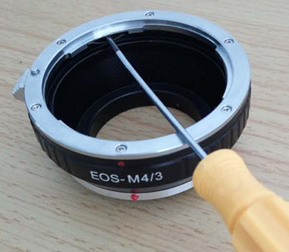
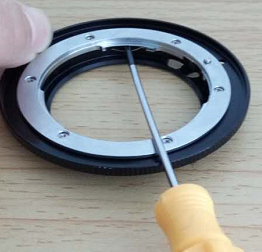
- If there is ever any more than a slight amount of rotational play, you may want to try tightening the lens mount adapter so it will hold the lens tighter to the mount. There are 3 flanges in the middle of the adapter (what the lens locks onto) that are split open slightly, this gap is what gives the tension that holds the lens tight to the body. Over time and with use these gaps decrease in size, no longer pulling the lens tight to the adapter, which allows the lens to move inside the mount more than it should.
- To tighten the fit, get a slim metal object (a #1.5 or #2.0 small flat eyeglass screwdriver is ideal) and insert it into the slit to open it up just a little bit (see images below, make sure to do it to all 3 evenly). The more you open the gap, the tighter the lens will be to the adapter; too much and the lens will have a hard time mounting so make sure to do it just a little bit at a time to all 3 flanges evenly, it doesn’t take much at all to get a tight fit.Note: please do not use too much strength, or the shrapnel will be damaged.


Q
What kind of rear and front caps would I buy to go on this since it doesn't come with any?
A
I don't think you need any. There is no glass.
Q
is this mount adapter work with panasonic GX-7 body & nikkor dx 18-200 lens.
A
The adapter will mount the lens and you will be able to use it manually. However, my copy of the adapter does not allow the lens to be fully mounted all the way until it clicks into place. It doesn't quite make it, but it's still very solidly mounted. Also, the manual aperture linkage doesn't work properly (on my copy, at least) so exposure is controlled only by shutter speed and/or ISO. You will be able to manually focus and zoom the lens but no VR, of course. It will be a frustrating experience. Instead, get a 14-140 Panasonic zoom if you can afford it!
Related Video
K&F Concept® Lens Mount Adapter for Canon EOS EF mount Lens to GH4
K&F M10101 M42 Lenses to Sony E Lens Mount Adapter
K&F M10111 M42 Lenses to Fuji X Lens Mount Adapter

